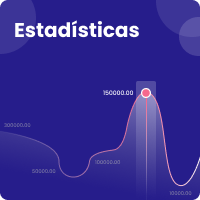Retracción de artículos biomédicos y sus implicaciones éticas
Resumen
La retracción es un mecanismo que permite la corrección de la literatura científica. Este artículo pretende demostrar que las retracciones han aumentado de manera progresiva, y sobresalen las del ámbito médico. Metodológicamente es un artículo de revisión bibliográfica, cuyos datos estadísticos se obtuvieron de estudios sobre artículos retractados, publicados entre el 2012 y el 2017, en inglés, desde las bases de datos de PubMed y Google Scholar. Entre los resultados sobresalientes se encuentran como causas más frecuentes de retracción: plagio, mala conducta, errores, fabricación y duplicación. La mayor incidencia reportada fue en Estados Unidos (EE.UU.), India, China, Japón y Alemania. El mayor índice de retracción fue para las revistas de factor de impacto bajo. El tiempo transcurrido para la retracción es largo, aunque ha disminuido. Esto permite que se citen estos artículos y se origine así una mala ciencia. Se concluye que se requiere de uniformidad en las notas y las reglas de retracción, así como señalizar de forma adecuada los artículos retractados, además de disminuir el tiempo para que esta se efectúe. En relación con la bioética, se revela un grave problema en la integridad de la literatura científica, así como un posible impacto de las retracciones en la salud de las personas
Descargas
Referencias bibliográficas
Abritis, A. (2015). An assessment of retractions as a measure of scientific misconduct and impact on public health risks (Tesis doctral). University of Florida, Florida. Recuperado de http://scholarcommons.usf.edu/etd/5630
De Almeida, R. M. V. R., Catelani, F., Fontes-Pereira, A. J. y Gave, N. de S. (2016). Retractions in general and internal medicine in a high-profile scientific indexing database. Sao Paulo Medical Journal = Revista Paulista De Medicina, 134(1), 74-78. doi: https://doi.org/10.1590/1516-3180.2014.00381601
Amos, K. A. (2014). The ethics of scholarly publishing: exploring differences in plagiarism and duplicate publication across nations. Journal of the Medical Library Association: JMLA, 102(2), 87-91. doi: https://doi.org/10.3163/1536-5050.102.2.005
Azoulay, P., Furman, J. L., Krieger, J. L. y Murray, F. E. (2012). Retractions (Working Paper No. 18499). National Bureau of Economic Research. doi: https://doi.org/10.3386/w18499
Balhara, Y. P. S. y Mishra, A. (2015). A study exploring attributes and nature of the retracted literature on mental disorders. Indian Journal of Medical Ethics, 12(1), 30-37. doi: https://doi.org/10.20529/IJME.2015.007
Bornemann-Cimenti, H., Szilagyi, I. S. y Sandner-Kiesling, A. (2016). Perpetuation of retracted publications using the example of the Scott S. Reuben Case: incidences, reasons and possible improvements. Science and Engineering Ethics, 22(4), 1063-1072. doi: https://doi.org/10.1007/s11948-015-9680-y
Budd, J. M., Coble, Z. y Abritis, A. (2016). An investigation of retracted articles in the biomedical literature. Proceedings of the Association for Information Science and Technology, 53(1), 1-9. https://doi.org/10.1002/pra2.2016.14505301055
Casadevall, A., Steen, R. G. y Fang, F. C. (2014). Sources of error in the retracted scientific literature. The FASEB Journal, 28(9), 3847-3855. https://doi.org/10.1096/fj.14-256735
Committee on Publication Ethics-COPE. (s. f.). COPE's retraction guidelines. Publicationethics.org. Recuperado de https://publicationethics.org/newsevents/cope%E2%80%99s-retraction-guidelines
Cosentino, A. M. y Veríssimo, D. (2016). Ending the citation of retracted papers. Conservation Biology: The Journal of the Society for Conservation Biology, 30(3), 676-678. doi: https://doi.org/10.1111/cobi.12676
Crossmark (s. f.). Support Center. Support.crossref.org. Recuperado de https://support.crossref.org/hc/en-us/sections/115000025203-Crossmark
Decullier, E., Huot, L., Samson, G. y Maisonneuve, H. (2013). Visibility of retractions: a cross-sectional one-year study. BMC Research Notes, 6, 238. doi: https://doi.org/10.1186/1756-0500-6-238
Elia, N., Wager, E. y Tramèr, M. R. (2014). Fate of articles that warranted retraction due to ethical concerns: a descriptive cross-sectional study. PLoS One, 9(1), e85846. https://doi.org/10.1371/journal.pone.0085846
Fanelli, D. (2013). Why growing retractions are (mostly) a good sign. PLoS Medicine, 10(12), e1001563. doi: https://doi.org/10.1371/journal.pmed.1001563
Fanelli, D., Costas, R. y Larivière, V. (2015). Misconduct policies, academic culture and career stage, not gender or pressures to publish, affect scientific integrity. PloS One, 10(6), e0127556. doi: https://doi.org/10.1371/journal.pone.0127556
Fang, F. C., Steen, R. G. y Casadevall, A. (2012). Misconduct accounts for the majority of retracted scientific publications. Proceedings of the National Academy of Sciences, 109(42), 17028-17033. https://doi.org/10.1073/pnas.1212247109
Fernández Mondéjar, E. y Ceraso, H. (2011). Un estrepitoso caso de fraude científico. Medicina Intensiva, 35(6), 325-327. https://doi.org/10.1016/j.medin.2011.05.020
Furman, J. L., Jensen, K. y Murray, F. (2012). Governing knowledge in the scientific community: exploring the role of retractions in biomedicine. Research Policy, 41(2), 276-290. https://doi.org/10.1016/j.respol.2011.11.001
Grieneisen, M. L. y Zhang, M. (2012). A comprehensive survey of retracted articles from the scholarly literature. PloS One, 7(10), e44118. doi: https://doi.org/10.1371/journal.pone.0044118
Lu, S. F., Jin, G. Z., Uzzi, B. y Jones, B. (2013). The retraction penalty: evidence from the Web of Science. Scientific Reports, 3, 3146. doi: https://doi.org/10.1038/srep03146
Madlock-Brown, C. R. y Eichmann, D. (2015). The (lack of) impact of retraction on citation networks. Science and Engineering Ethics, 21(1), 127-137. doi: https://doi.org/10.1007/s11948-014-9532-1
Marcus, A. y Oransky, I. (2014). What studies of retractions tell us. Journal of Microbiology & Biology Education, 15(2), 151-154. doi: https://doi.org/10.1128/jmbe.v15i2.855
DeMaria, A. N. (2012). Scientific misconduct, retractions, and errata. Journal of the American College of Cardiology, 59(16), 1488-1489. doi: https://doi.org/10.1016/j.jacc.2012.03.005
Miller, D. R. (2012). Retraction of articles written by Dr. Yoshitaka Fujii. Canadian Journal of Anaesthesia, 59(12), 1081-1088. doi: https://doi.org/10.1007/s12630-012-9802-9
NatureWorldNews. (2014, marzo 1). Scholarly journals accepted 120 fake research papers generated by computer program. Natureworldnews.com. Recuperado de http://www.natureworldnews.com/articles/6217/20140301/scholarly-journals-accepted-120-fake-research-papers-generated-by-computer-program.htm
Nogueira, T. E., Gonçalves, A. S., Leles, C. R., Batista, A. C. y Costa, L. R. (2017). A survey of retracted articles in dentistry. BMC research notes, 10(1), 253. https://doi.org/10.1186/s13104-017-2576-y
Puigdomènech, P. (2014). Dealing with scientific integrity issues: the Spanish experience. Archivum Immunologiae et Therapiae Experimentalis, 62(1), 1-6. doi: https://doi.org/10.1007/s00005-013-0256-8
Rai, R. y Sabharwal, S. (2017). Retracted publications in orthopaedics: prevalence, characteristics, and trends. JBJS, 99(9), e44. https://doi.org/10.2106/JBJS.16.01116
Resnik, D. B. y Dinse, G. E. (2013). Scientific retractions and corrections related to misconduct findings. Journal of Medical Ethics, 39(1), 46-50. doi: https://doi.org/10.1136/medethics-2012-100766
Resnik, D. B., Wager, E. y Kissling, G. E. (2015). Retraction policies of top scientific journals ranked by impact factor. Journal of the Medical Library Association: JMLA, 103(3), 136-139. doi: https://doi.org/10.3163/1536-5050.103.3.006
Retraction Watch. (2015, junio 16). The Retraction Watch Leaderboard. Retractionwatch.com. Recuperador de https://retractionwatch.com/the-retraction-watch-leaderboard/
Samp, J. C., Schumock, G. T. y Pickard, A. S. (2012). Retracted publications in the drug literature. Pharmacotherapy: The Journal of Human Pharmacology and Drug Therapy, 32(7), 586-595. https://doi.org/10.1002/j.1875-9114.2012.01100.x
Steen, R. G., Casadevall, A. y Fang, F. C. (2013). Why has the number of scientific retractions increased? PloS one, 8(7), e68397. https://doi.org/10.1371/journal.pone.0068397
The Lancet. (2010). Retraction--Ileal-lymphoid-nodular hyperplasia, non-specific colitis, and pervasive developmental disorder in children. Lancet (London, England), 375(9713), 445. doi: https://doi.org/10.1016/S0140-6736(10)60175-4
Van Noorden, R. (2011). Science publishing: the trouble with retractions. Nature, 478(7367), 26-28. doi: https://doi.org/10.1038/478026a
Wang, J., Ku, J. C., Alotaibi, N. M. y Rutka, J. T. (2017). Retraction of neurosurgical publications: A systematic review. World neurosurgery, 103, 809-814. https://doi.org/10.1016/j.wneu.2017.04.014











